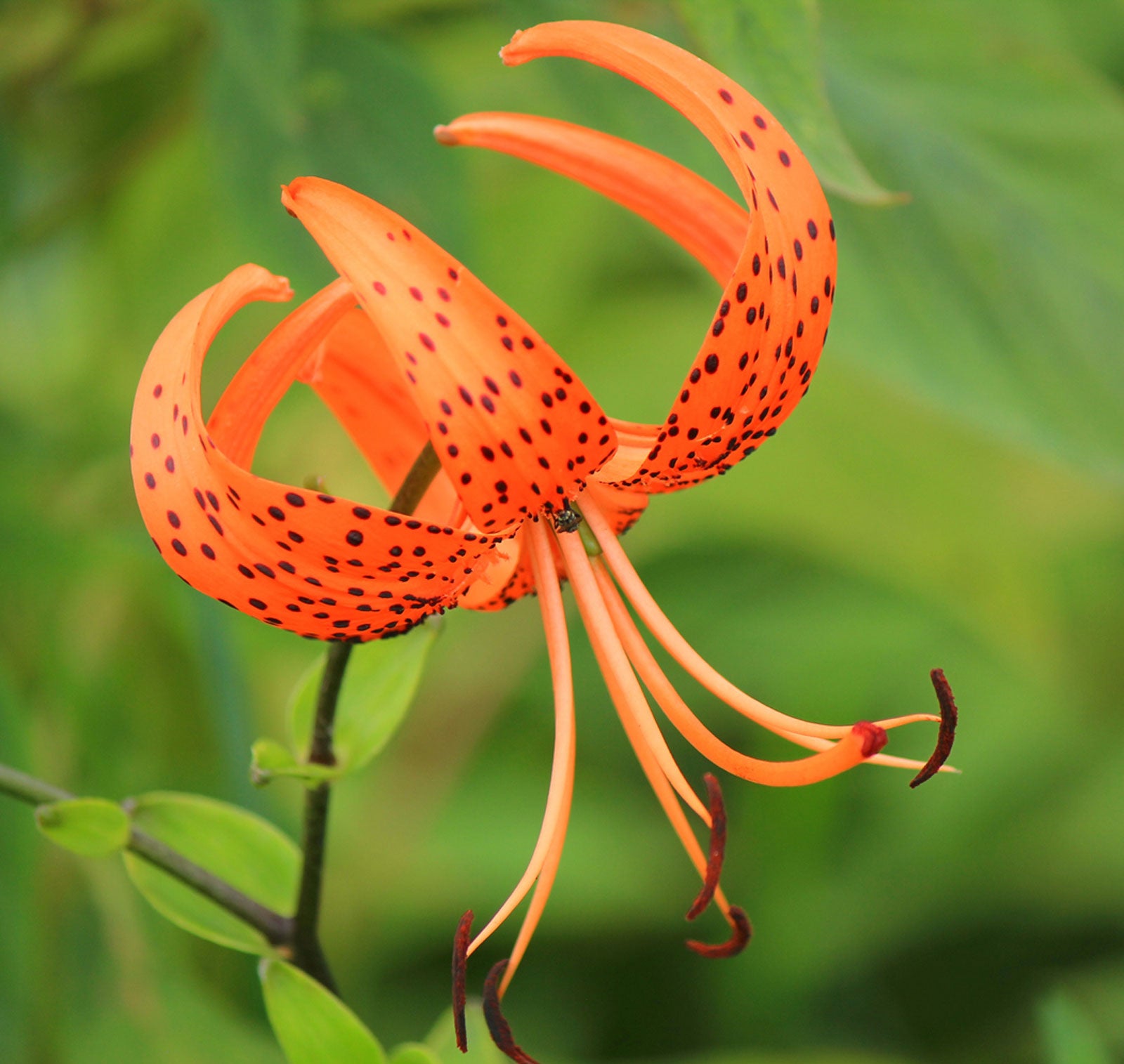Growing Tiger Lilies: Information On Growing And Caring For Tiger Lily Plant


Tiger lily flowers (Lilium lancifolium or Lilium tigrinum) offer a tall and showy flower that you may remember from your grandmother's garden. The tiger lily plant can reach several feet (1 m.) tall, and while the stems are usually stiff and sturdy, a slender stake occasionally helps provide an upright appearance and support for multiple flowers. Tiger lily flowers grow in mass atop a single stem, featuring curved sepals that complement the black-flecked orange petals above. Black bulbils will appear in the axils above the leaves. Learning how to grow tiger lilies involves planting the bulbils and waiting, as it may be five years before these produce tiger lily flowers. If you have tiger lilies growing in your existing garden, keep them happy with soil amendments as you learn how to grow tiger lilies from the bulbils.
How to Grow Tiger Lilies
Since they are grown from bulbils, the tiger lily plant won't tolerate soggy soil. Therefore, make sure to plant them in a well-draining area or you may find that the bulbils have rotted away. To ensure proper drainage, you may need to amend the soil prior to planting. Amending the soil around tiger lily flowers is as simple as adding compost or humus. Peat moss, sand or straw mixed into the beds are other ways to improve drainage and retain appropriate moisture. Proper soil preparation results in healthier tiger lily plants that produce more and bigger blooms.
Tiger Lily Care
Tiger lily care involves little work after plants are established, as they are somewhat drought tolerant. When growing tiger lilies, you'll find they often thrive with existing rainfall. Fertilization keeps the tiger lilies healthy when applied once or twice monthly. Feeding may also be in the form of organic mulch, which does double duty when applied to growing tiger lilies. The mulch will decompose to add nutrients, while providing low shade to the tiger lily plant, which likes cool roots. You can also plant shorter flowering specimens to help keep the lily roots cool. It should also be noted that it's normally better to plant tiger lilies in an area of the garden away from other lily varieties, like Asiatic and Oriental lilies. Tiger lily plants are prone to mosaic virus and, although this doesn't harm them, the virus can be transmitted or spread to other lilies nearby. Hybrid lily varieties that are affected with mosaic virus will have distorted or mottled blooms, and will flower less too. Affected plants should be promptly removed and discarded.
Sign up for the Gardening Know How newsletter today and receive a free copy of our e-book "How to Grow Delicious Tomatoes".

Becca Badgett was a regular contributor to Gardening Know How for ten years. Co-author of the book How to Grow an EMERGENCY Garden, Becca specializes in succulent and cactus gardening.